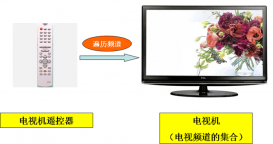一、意图
将对象组合成树形结构以表示”部分-整体”的层次结构。Composite使用户对单个对象和组合对象的使用具有一致性。
Composite变化的是一个对象的结构和组成。
二、合成模式中主要角色
抽象组件(Component)角色:抽象角色,给参加组合的对象规定一个接口。在适当的情况下,实现所有类共有接口的缺省行为。声明一个接口用于访问和管理Component的子组件
树叶组件(Leaf)角色:在组合中表示叶节点对象,叶节点没有子节点。在组合中定义图元对象的行为。
树枝组件(Composite)角色:存储子部件。定义有子部件的那些部件的行为。在Component接口中实现与子部件有关的操作。
客户端(Client):通过Component接口操纵组合部件的对象
三、合成模式的优点和缺点
Composite模式的优点
1、简化客户代码
2、使得更容易增加新类型的组件
Composite模式的缺点:使你的设计变得更加一般化,容易增加组件也会产生一些问题,那就是很难限制组合中的组件
四、合成模式适用场景
1、你想表示对象的部分-整体层次结构
2、你希望用户忽略组合对象和单个对象的不同,用户将统一地使用组合结构中的所有对象。
五、合成模式与其它模式
装饰器模式:Decorator模式经常与Composite模式一起使用。当装饰与合成一起使用时,它们通常有一个公共的父类。因此装饰必须支持具有add,remove和getChild操作的Component接口
享元模式:Flyweight模式让你共享组件,但不再引用他们的父部件
迭代器模式:Itertor可用来遍历Composite
访问者模式:Visitor将本来应该分布在Composite和Leaf类中的操作和行为局部化。
六、安全式的合成模式
在Composite类里面声明所有的用来管理子类对象的方法。这样的做法是安全的。因为树叶类型的对象根本就没有管理子类的方法,因此,如果客户端对树叶类对象使用这些方法时,程序会在编译时期出错。编译通不过,就不会出现运行时期错误
这样的缺点是不够透明,因为树叶类和合成类将具有不同的接口。
七、安全式的合成模式结构图

八、安全式的合成模式PHP示例
|
1
2
3
4
5
6
7
8
9
10
11
12
13
14
15
16
17
18
19
20
21
22
23
24
25
26
27
28
29
30
31
32
33
34
35
36
37
38
39
40
41
42
43
44
45
46
47
48
49
50
51
52
53
54
55
56
57
58
59
60
61
62
63
64
65
66
67
68
69
70
71
72
73
74
75
76
77
78
79
80
81
82
83
84
85
86
87
88
89
90
91
92
93
94
95
96
97
98
99
100
101
102
103
104
105
106
107
108
109
110
111
112
113
114
115
116
117
|
<?php/** * 抽象组件角色 */interface Component { /** * 返回自己的实例 */ public function getComposite(); /** * 示例方法 */ public function operation();} /** * 树枝组件角色 */class Composite implements Component { private $_composites; public function __construct() { $this->_composites = array(); } public function getComposite() { return $this; } /** * 示例方法,调用各个子对象的operation方法 */ public function operation() { echo 'Composite operation begin:<br />'; foreach ($this->_composites as $composite) { $composite->operation(); } echo 'Composite operation end:<br /><br />'; } /** * 聚集管理方法 添加一个子对象 * @param Component $component 子对象 */ public function add(Component $component) { $this->_composites[] = $component; } /** * 聚集管理方法 删除一个子对象 * @param Component $component 子对象 * @return boolean 删除是否成功 */ public function remove(Component $component) { foreach ($this->_composites as $key => $row) { if ($component == $row) { unset($this->_composites[$key]); return TRUE; } } return FALSE; } /** * 聚集管理方法 返回所有的子对象 */ public function getChild() { return $this->_composites; } } class Leaf implements Component { private $_name; public function __construct($name) { $this->_name = $name; } public function operation() { echo 'Leaf operation ', $this->_name, '<br />'; } public function getComposite() { return null; }} /** * 客户端 */class Client { /** * Main program. */ public static function main() { $leaf1 = new Leaf('first'); $leaf2 = new Leaf('second'); $composite = new Composite(); $composite->add($leaf1); $composite->add($leaf2); $composite->operation(); $composite->remove($leaf2); $composite->operation(); } } Client::main();?> |
以上就是使用php实现合成模式的代码,还有一些关于合成模式的概念区分,希望对大家的学习有所帮助。















